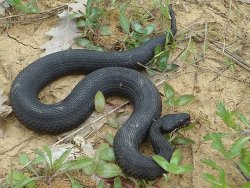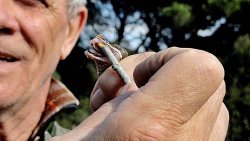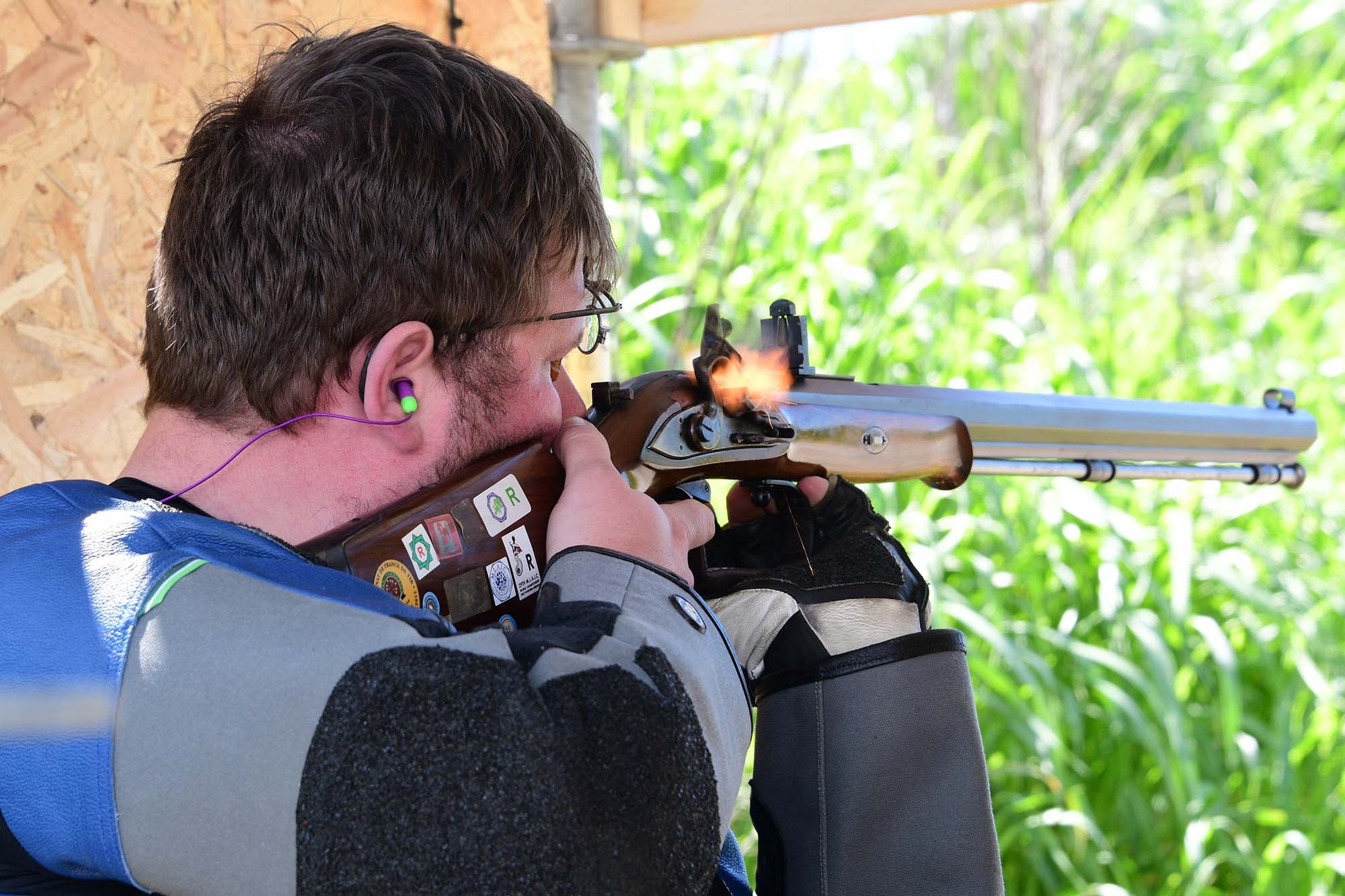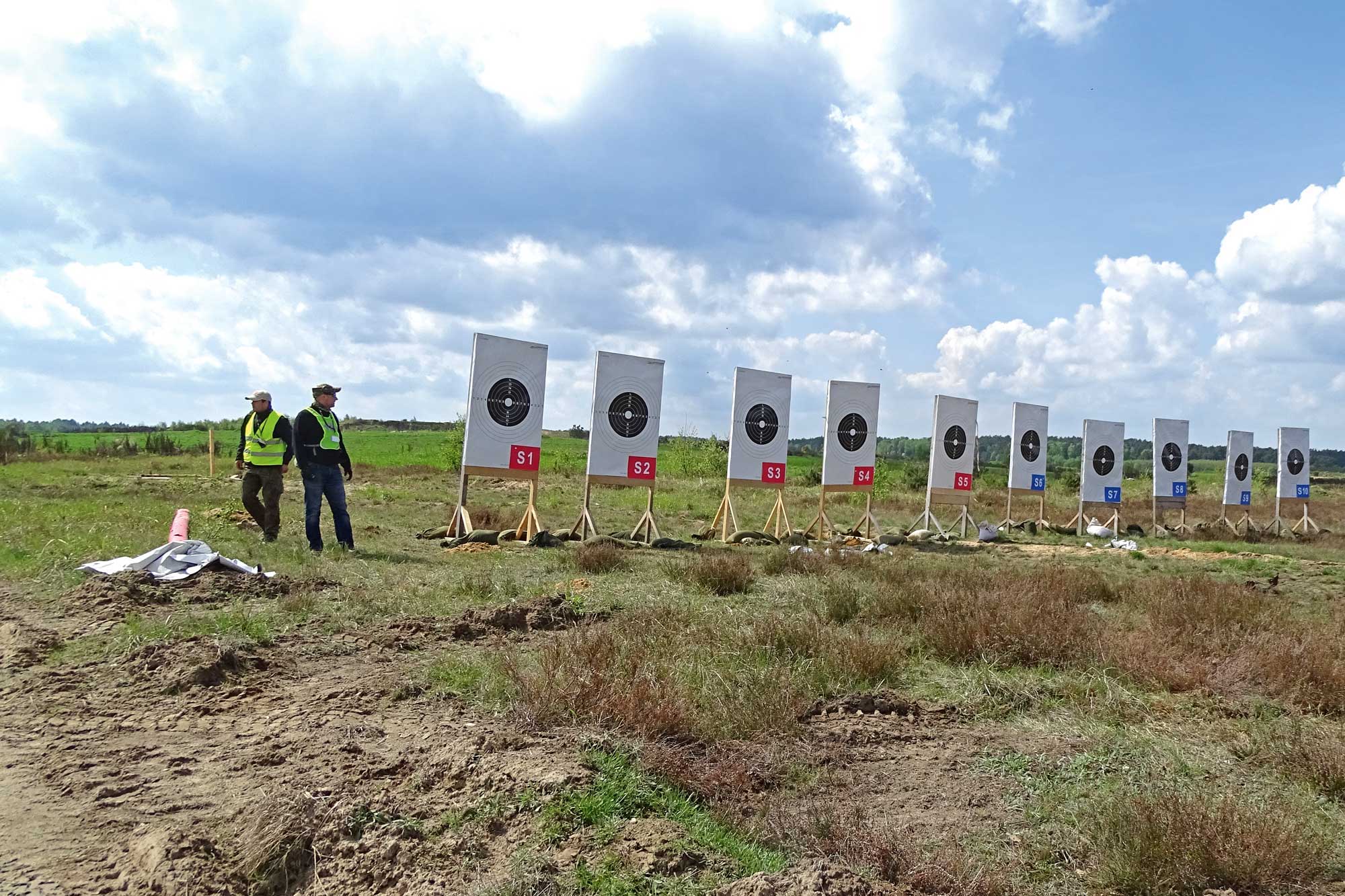Summertime is travel time and many vacationers are drawn to the beautiful and varied landscapes of Italy. For many dog owners, whether hunters or non-hunters, it is clear: our four-legged companion also needs its well-deserved vacation and is therefore with us, of course. However, every aspect should be considered – In this case the Mediterranean climate of Italy. Because this provides not only for good weather, but also for a different flora and fauna: in particular the presence of the asp viper. How dangerous the snake is – especially for dogs – we had the expert Gualberto Tiberi explain to us in detail.
We leave the word to Tiberi: "I was born in 1950 in the surroundings of L'Aquila and since my pre-school days I have been fascinated by nature. As a self-taught student I devoted myself to the study of animals in all their forms. Mycology studies then gave me a big help, since I had to know the various ecosystems found in Italian and foreign forests. The research on mycetes allowed me to deal with both botanical and zoological cenoses. My main activity as a mycologist does not prevent me from continuing to poke my nose into different ecosystems, such as the Mediterranean scrub, where I regularly encounter our Vipera aspis and its subspecies. I was the speaker at the Vipera aspis conference held on April 14, 2023, at the headquarters of the Lidense Amateur Ecological Mycological Group. To tell the truth, there were not many of us, or rather, there were many fewer people than those who should have been interested in the topics covered during the conference, namely a lengthy examination of the habits and main characteristics of this reptile."
"Nationally, there are four species of which one, the Orsini's Viper, typical of Abruzzo and the Sibillini Mountains, is considered by experts to be a half viper in relation to its reduced venomous potential.
Of the others, two are present in the aerials of northern Italy (Liguria and the Karst Mountains) while the most common one is widespread throughout the whole territory with the exception of Sardinia, where studies are still underway to understand the natural reasons that prevent its presence, despite several attempts to introduce it."
Gualberto demonstrated that he is truly an expert on the subject, providing during the course of the conference, countless technical scientific details. I carefully studied and welcomed some of those details because they were unknown to me.
In particular, the small area in which the viper lives and feeds on its prey, which are mainly mice, toads, lizards, birds, etc., is a surprise. Vipera aspis normally occupies a home range from 22 square meters up to about 40-41 square meters. It is because of this, that Gualberto often repeats that he knows every place where vipers are present in the areas he frequents and that he would be able – if they have not been preyed upon by raptors and wild boars in the meantime – to find them in more or less the same spot.
Another important characteristic is the viper's mode and range of attack. From studies done, but also from Gualberto's direct experiences, in order to have the necessary thrust to attack and bite (a man, a dog or any prey) a viper must be laid on a surface for 100% of its length. This is due to its spinal structure that allows it to impart the necessary thrust to attack, which in any case, does not go beyond one-third of its length. For example, if a viper is 60 cm long (still an exceptional length), the range of its attack would not go beyond 20 cm. This helps to understand why adder attacks involve dogs to a greater extent than people who are normally upright, notwithstanding inappropriate actions when looking for mushrooms, wild asparagus, etc.
It is always good to make noise and warn of our presence snakes that may be there while it is not appropriate to shove bare hands between stones, shrubs etc.; better to always use a stick to probe the area where you intend to collect something.

Spotting a viper among the many harmless snakes is relatively simple. I say “relatively” because if the encounter is peaceful in the sense that one has the opportunity to observe it quietly sunbathing, then it is also possible to catch a glimpse of the right details. But this is not always the case, because as soon as it senses a noise or unusual presence, the viper tends to run away to hide and protect itself. The main features that characterize the Vipera aspis are the pupils, that are vertical (unlike other snakes that have them horizontal) and the tail that in the end section (about last 10 cm) is greatly reduced in diameter compared to the rest of the body. Recognizing a viper by its color is not always easy also because, as you can see in the photos, there could also be individuals with altered genetic forms.
Gualberto Tiberi emphasizes the function that the viper plays in nature and feels compelled to warn people like us hunters, who are all-round nature lovers and usually also mushroom and asparagus pickers, of the risks – actually statistically minimal, with 1-2 deaths per year on a total of about 200 bites – with a mortality definitely low compared to insect bites and consequent anaphylactic shock, for example.
If anything, the real problem are our four-legged friends, our dogs, who do not attend congresses and who also do not know Gualberto Tiberi, but are attracted by the reptile's movements and, out of curiosity, go near the animals. Thus, they can become the target of an attack that usually involves their nose as the most prominent and hairless body part.

the powerful hemotoxic-type venom, containing metals and other particularly harmful substances, is contained.
In such cases what to do? It is important to avoid the areas where the previous year you yourself or your friends, encountered a viper because – rest assured – it will still be around there. Carrying the serum with you is not so simple because you cannot be sure that it has been properly stored (and therefore still effective). Gualberto showed us an electric tool similar to a flat flashlight with which, by following a procedure and applying the electrodes alternately on the two bite holes, current acts on the venom dissociating it at the molecular level and thus rendering it almost harmless. Of course, the time factor is decisive, and you are not always able to intervene promptly in the event of a dog attack because of vegetation or simply because the dog is out of your line of sight. My personal advice is to always have the contact details of a veterinarian in the area you are visiting and to take your dog there immediately after a bite for treatment. Good results and adequate recovery can often be achieved. Sometimes, unfortunately, there are major consequences, including the loss of sense of smell, which is vital for a hunting dog.
Tiberi also refutes some commonplaces concerning the viper, explaining that it does not climb shrubs, much less trees; therefore, we must always look at the ground, making our way with the ever-present stick.
All in all, the conference led by Gualberto Tiberi was a very interesting event with a well-prepared speaker who presented and explained the topic in a clear, simple and appealing way. The event was also a good opportunity to meet with conservationists.
We will not miss meeting Gualberto Tiberi again, who was bitten four times by vipers (two of them very seriously) but, being a convinced naturalist, has not stopped studying and loving these reptiles, which are increasingly rare in our areas due to intensive cultivation and other climatic factors.
"The snake changes its skin but not its nature."
(African proverb)










